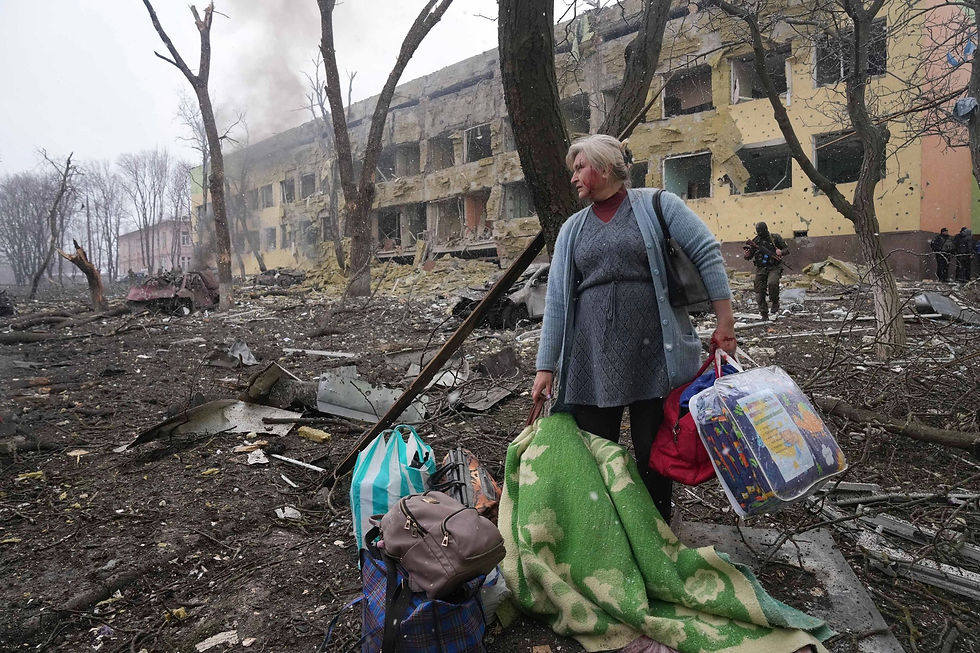Beyond the Noise: A Reflection on Humanitarian Realities.
- Capt.Daffy

- May 7
- 3 min read

Behind every statistic of suffering, there is a face. Behind every policy that falls short, there is a cost paid in real lives. Humanitarianism is not solely about strategic plans drafted in safe rooms—it’s also about the quiet determination of those who stay, even when the system falters, driven by the simple commitment to uphold human dignity.
Learning from the Past
As I navigate the landscape of humanitarian emergencies, whether in conflict zones, climate-affected areas, or disease outbreaks, I often find myself reflecting on familiar patterns. Sometimes, it feels like history repeats not because we lack knowledge, but because change requires more than good intentions. It demands courage, collaboration, and the willingness to listen.
Governments, donors, and humanitarian organizations often find themselves in a reactive cycle, rushing to respond to crises while struggling to address their root causes. The reality is complex: while funding is mobilized to address emergencies, long-term investments in resilience and prevention often lag behind. It’s a systemic challenge—one shaped by urgency, funding limitations, and competing priorities.
The Human Impact

Despite the systemic hurdles, countless individuals on the ground work tirelessly to make a difference. They don’t always receive recognition, but they live the essence of humanitarianism.
One colleague comes to mind—a dedicated doctor who chose to serve in a high-risk area despite personal sacrifice. His commitment to saving lives transcended procedural barriers and challenges of coordination. He wasn’t just qualified in theory; he had hundreds of successful surgeries behind him, saving mothers on the brink, delivering fragile lives into the world, and building a reputation rooted in skill and compassion.
But despite his proven competence, he found himself deployed under a pharmacist whose qualifications were vague and whose leadership often seemed driven more by fear of exposure than by genuine commitment to the mission. Still, the doctor remained steadfast. While others focused on protecting careers, he remained focused on protecting lives, night after night, navigating bureaucratic obstacles and personal sacrifice, including being away from his young family, even his newborn child.
Amid constant shelling and uncertainty, his focus never wavered. He didn’t stay because he was paid enough or because anyone was watching; he stayed because his sense of duty ran deeper than the challenges he faced. He embodied the quiet, uncelebrated resilience that keeps hope alive in places most would rather leave behind.
Through his story, I am reminded that true humanitarianism often happens in the shadows, not in conference halls or strategy meetings, but in the dedication of those who quietly and consistently put people first.
True humanitarianism often happens in the shadows, not in conference halls or strategy meetings, but in the dedication of those who quietly and consistently put people first.
It’s easy to become disheartened when change seems slow and crises persist. Yet, the essence of humanitarianism is found in those small, often unseen acts of care and resilience. While the system may feel imperfect, it’s vital to honor the commitment of those who remain steadfast, doing what they can with the resources available.
Moving Forward: A Collective Responsibility
If we aim to break the cycle of reactive response, we must rethink how we approach crisis management. This means not just addressing the symptoms but understanding the deeper power dynamics that sustain vulnerability.
Stefan Dercon, in his work Gambling on Development, challenges us to see that breaking out of poverty is not solely about funding—it’s about who holds the power and how decisions are made.
In the humanitarian sector, this means prioritizing local ownership rather than creating parallel systems that fade when donor attention shifts.
Similarly, Dambisa Moyo, in Dead Aid, warns of the unintended consequences of poorly structured assistance—how aid can inadvertently prop up broken systems rather than fostering sustainable solutions. Taking this to heart, we must focus not only on mobilizing resources but on ensuring they are used to build resilience rather than dependency.
Therefore, our approach should include:
Shifting from reaction to prevention: Investing in local capacity and preparedness before emergencies occur.
Ensuring accountability: Not just tracking funds but measuring their real impact on communities.
Amplifying local voices: Supporting communities to take charge of their own recovery processes, unfiltered and unmoderated.
By acknowledging the complexity and being intentional about empowering local actors, we can work towards breaking the cycles of crisis and dependency. It’s not easy, but it is essential if we are to truly honor the spirit of humanitarianism.
A Final Thought
Humanitarianism is not just about solving crises—it’s about maintaining hope and humanity even when the path forward is uncertain. It requires constant reflection and a commitment to learn from both successes and failures. Above all, it’s about staying grounded in the belief that every life matters.
What has your experience been in breaking cycles of vulnerability? Have you witnessed practices that truly make a difference? I’d love to hear your thoughts and reflections in the comments.







What an exceptional and thought-provoking article! The author's insights are truly commendable and deserving of the highest recognition. Good one.
“Despite the systemic hurdles, countless individuals on the ground work tirelessly to make a difference. They don’t always receive recognition, but they live the essence of humanitarianism.”
Take home for Me. Great piece.